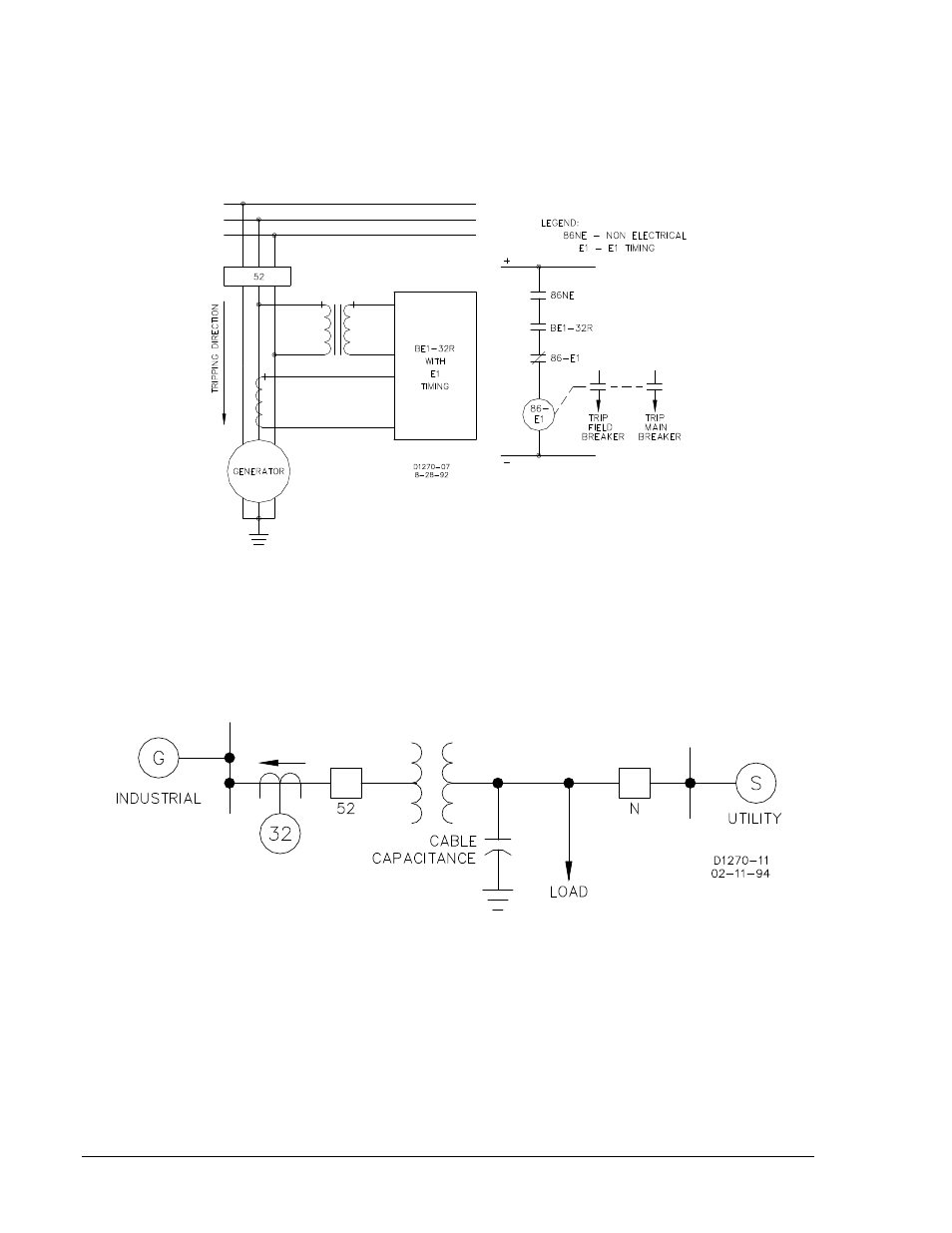Example 5: delayed electrical trip, Example 6: breaker opening detection, Example 5: delayed electrical trip -4 – Basler Electric BE1-32R User Manual
Page 14: Example 6: breaker opening detection -4, Figure 1-6. breaker opening detection -4

Example 5: Delayed Electrical Trip
On large steam units, where overspeeding is a prime concern, a reverse power relay can be used to
supervise electrical tripping (field and main ac breakers) for selected relay operations (e.g., non-electrical
trips, loss of field relay), as shown in Figure 1-5. The reverse power relay delays breaker tripping until
trapped steam has been removed from the piping. In this case, a separate direct-tripping anti-motoring
relay can be used to protect for situations not related to an automatic shutdown of the unit.
Figure 1-5. Single-Phase, Non-Electrical Trip Supervision
Example 6: Breaker Opening Detection
Figure 1-6 shows a reverse power relay used to detect the opening of a source at an industrial (or other
independent generation) location. A location with no generation but multiple ties from a common source is
a good candidate for this relay application. With local generation, the relay is applicable if the local
generation is not to deliver real power to the utility.
Figure 1-6. Breaker Opening Detection
Under near-floating conditions (minimal flow of real power from the utility), the relay can encounter a wide
range of power factor angles in the first and second quadrants (see Figure 1-7). If the local generation is
underexcited, reactive power is supplied by the utility and operation is in the first quadrant. Figure 1-7
shows the range of power factor angles (also in the first two quadrants) under heavy line loading.
Because of these power factors, the relay must not operate for any angle in the first and second
quadrants.
1-4
BE1-32R, BE1-32O/U General Information
9171100990 Rev T
